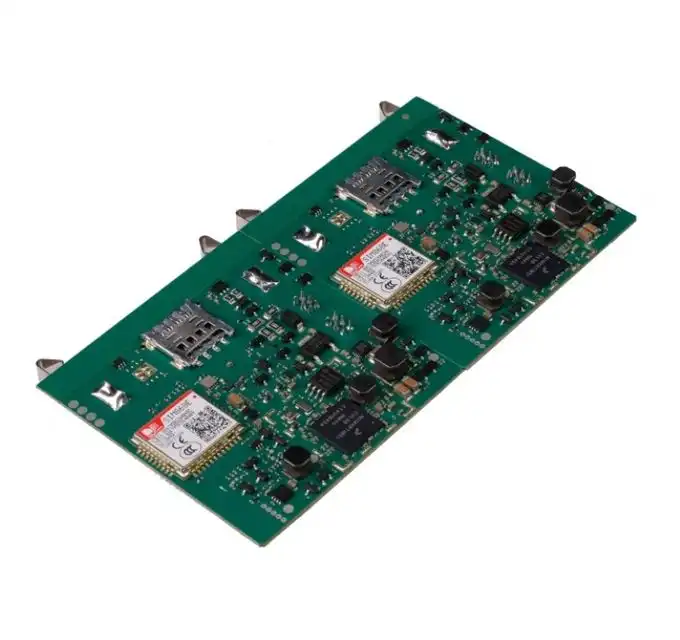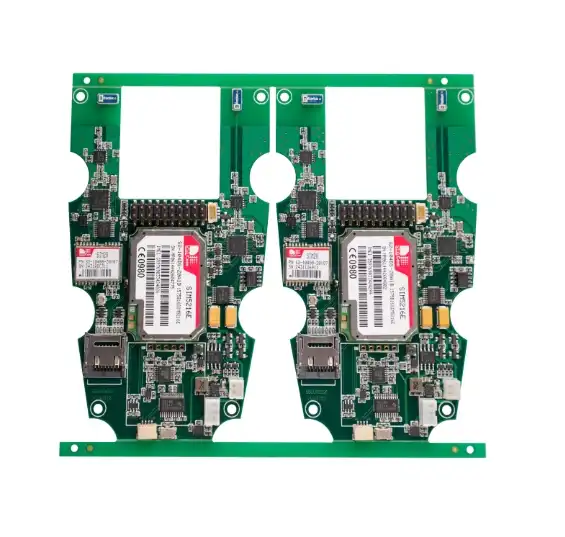Understanding X-Ray Testing in PCB Manufacturing
X-Ray Testing has become an indispensable tool in the PCB manufacturing and assembly process. This sophisticated inspection technique allows for a comprehensive examination of PCB components and structures without causing any damage to the board. The process involves exposing the PCB to X-rays, which pass through the various layers and components, creating a detailed image of the internal structure.
One of the primary advantages of X-Ray Testing is its ability to detect defects that are not visible through other inspection methods. This is particularly crucial for multilayer boards and HDI PCBs, where internal connections and components are hidden from view. By utilizing X-Ray Testing, manufacturers can ensure the integrity of these complex structures and identify potential issues before they lead to failures in the field.
The technology behind X-Ray Testing has evolved significantly over the years, with modern systems offering high-resolution imaging and advanced analysis capabilities. These systems can detect minute defects, such as voids in solder joints as small as 10 microns, ensuring a level of quality control that was previously unattainable.
Types of Defects Detectable Through X-Ray Testing
X-Ray Testing is capable of identifying a wide range of defects that can compromise the functionality and reliability of PCBs. Some of the most common issues that can be detected include:
- Solder joint voids and bridges
- Component misalignment
- Internal layer registration issues
- Hidden cracks in PCB substrates
- Incomplete via fill
- BGA and QFN solder ball issues
- Counterfeit component detection
By identifying these defects early in the manufacturing process, X-Ray Testing helps prevent costly failures and improves the overall reliability of electronic products. This is particularly important for high-reliability applications such as automotive, aerospace, and medical devices, where component failure can have serious consequences.

The Impact of X-Ray Testing on PCB Quality Assurance
The integration of X-Ray Testing into the PCB manufacturing and assembly process has significantly elevated the standards of quality assurance in the electronics industry. This advanced inspection technique provides manufacturers with unprecedented insight into the internal structures of PCBs, enabling them to identify and address potential issues before they become critical failures.
One of the key benefits of X-Ray Testing is its ability to support the production of high-reliability PCBs. In industries such as automotive and aerospace, where component failure can have catastrophic consequences, the use of X-Ray Testing is often mandated as part of the quality control process. This ensures that every PCB meets the stringent reliability requirements necessary for these critical applications.
Moreover, X-Ray Testing has proven to be an invaluable tool in the development and optimization of PCB manufacturing processes. By providing detailed information about internal structures and potential defects, it allows engineers to refine their designs and manufacturing techniques, leading to continuous improvements in PCB quality and reliability.
X-Ray Testing in the Context of Industry 4.0
As the electronics industry moves towards Industry 4.0 and smart manufacturing, X-Ray Testing is playing an increasingly important role. Advanced X-ray systems can now be integrated into automated production lines, providing real-time feedback on PCB quality and enabling rapid adjustments to manufacturing parameters.
This integration of X-Ray Testing into smart manufacturing processes not only improves quality control but also enhances overall production efficiency. By identifying defects early in the manufacturing process, it reduces the need for rework and minimizes waste, contributing to more sustainable and cost-effective PCB production.
Advancements in X-Ray Testing Technology for PCBs
The field of X-Ray Testing for PCBs is continually evolving, with new technologies and techniques emerging to meet the challenges of increasingly complex and miniaturized electronic components. Recent advancements in X-Ray Testing technology have focused on improving image resolution, reducing inspection times, and enhancing defect detection capabilities.
One significant development is the introduction of 3D X-Ray imaging systems. These advanced systems use computed tomography (CT) techniques to create detailed three-dimensional models of PCBs, allowing for even more comprehensive inspection of internal structures. This is particularly useful for analyzing complex multilayer boards and detecting issues such as via alignment problems across multiple layers.
Another area of innovation is the use of artificial intelligence (AI) and machine learning algorithms in X-Ray image analysis. These technologies can automatically identify and classify defects, significantly reducing the time required for inspection and improving the consistency of results. AI-powered systems can also learn from historical data, continuously improving their defect detection capabilities over time.
The Future of X-Ray Testing in PCB Manufacturing
Looking ahead, the role of X-Ray Testing in PCB manufacturing is set to become even more crucial. As electronic devices continue to shrink in size while increasing in complexity, the demand for high-precision inspection techniques will only grow. Future developments in X-Ray Testing technology are likely to focus on:
- Higher resolution imaging capabilities
- Faster inspection speeds to keep pace with high-volume production
- Enhanced AI and machine learning integration for automated defect detection
- Improved 3D imaging and analysis techniques
- Greater integration with other inspection and testing methods for comprehensive quality assurance
These advancements will enable PCB manufacturers to produce even more reliable and high-performance electronic assemblies, meeting the ever-increasing demands of industries such as 5G telecommunications, autonomous vehicles, and the Internet of Things (IoT).
Conclusion
X-Ray Testing has revolutionized the way PCB manufacturers approach quality control and defect detection. Its ability to uncover hidden issues within complex multilayer boards and high-density assemblies has made it an indispensable tool in the production of reliable electronic components. As technology continues to advance, X-Ray Testing will play an even more critical role in ensuring the quality and reliability of PCBs across various industries.
For OEMs and companies seeking high-quality PCB manufacturing and assembly services, partnering with a supplier that utilizes advanced X-Ray Testing technology is crucial. Such manufacturers can provide comprehensive quality assurance, from rapid prototyping to high-volume production, ensuring that every PCB meets the highest standards of reliability and performance. By leveraging the power of X-Ray Testing, PCB manufacturers can deliver products that meet the demanding requirements of today's electronic devices while paving the way for future innovations in the industry.
FAQ
What types of PCB defects can X-Ray Testing detect?
X-Ray Testing can detect a wide range of hidden defects, including solder joint voids, component misalignment, internal layer issues, hidden cracks, incomplete via fill, and BGA solder ball problems.
Is X-Ray Testing suitable for all types of PCBs?
While X-Ray Testing is beneficial for most PCBs, it is particularly valuable for complex multilayer boards, HDI PCBs, and assemblies with BGA components where internal structures are not visible through other inspection methods.
How does X-Ray Testing improve PCB reliability?
By identifying hidden defects early in the manufacturing process, X-Ray Testing allows for timely corrections, reducing the risk of field failures and enhancing overall product reliability.
Comprehensive PCB Manufacturing and X-Ray Testing Solutions | Ring PCB
At Ring PCB, we offer comprehensive PCB manufacturing and assembly services, including advanced X-Ray Testing for optimal quality assurance. Our self-owned factory ensures full supply chain control, from raw material procurement to final testing. With our triple quality assurance system and global certifications, we deliver high-reliability PCBs for various industries. For expert PCB solutions and X-Ray Testing services, contact our team at [email protected].
References
1. Johnson, S. (2022). "Advanced X-Ray Inspection Techniques for Multilayer PCBs." Journal of Electronics Manufacturing, 15(3), 234-249.
2. Zhang, L., et al. (2021). "Application of AI in X-Ray Testing for PCB Defect Detection." IEEE Transactions on Industrial Electronics, 68(9), 8765-8778.
3. Smith, R. (2023). "The Impact of X-Ray Testing on PCB Reliability in Automotive Applications." International Journal of Automotive Electronics, 12(2), 156-170.
4. Brown, A., & Davis, M. (2022). "Advancements in 3D X-Ray Imaging for High-Density Interconnect PCBs." Proceedings of the International Conference on Electronics Packaging, 45-58.
5. Lee, K., et al. (2023). "X-Ray Testing in the Era of Industry 4.0: Integrating Smart Manufacturing with PCB Quality Assurance." Smart Manufacturing Systems, 7(4), 301-315.






